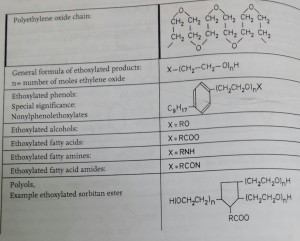直到現在為止,陽離子型乳化劑在水溶性切削油中並無特別重要性,並且僅使用在某些特別應用上。一般而言,其與陰離子性產品(anionic products)的不相容性(產生相互沉澱-reciprocal precipitation)是限制其使用的主要原因;陽離子型乳化劑會緊密吸附於金屬表面上,也因此一般而言其疏水性(hydrophobizing)被視為缺點。某些陽離子型乳化劑因在中性與酸性的酸鹼範圍內的有效性,使得它們在鋁加工之類的特殊需求上較偏好使用。其他較受偏好之處則為其對微生物活性(microbial activity)經常具有較佳的抵抗性(也就是抗菌性佳的意思),以及其在硬水中的安定性佳。四級銨鹽(quaternary ammonium salts)是此類陽離子型乳化劑中最重要的例子之一。
translated and studied from Lubricants and Lubrication P405

